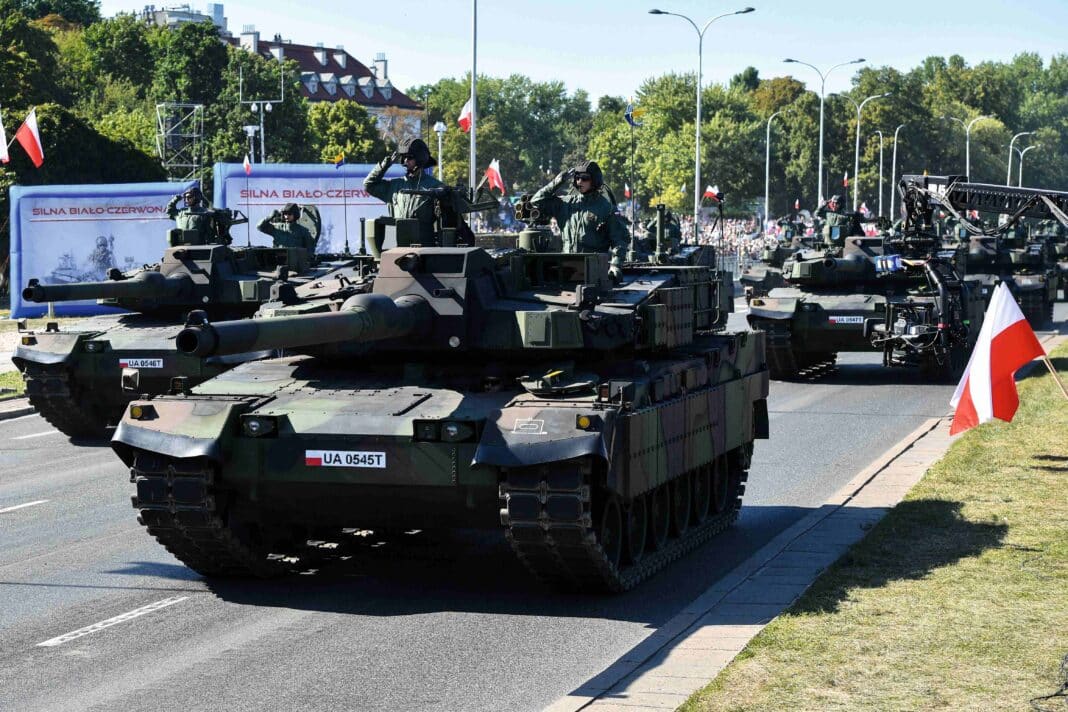Poland and Korea were both ruled by foreign powers at the start of the 20th century, Poland partitioned between Austria, Germany and Russia, and Korea under Japanese rule. Such shared histories of external oppression are clearly a factor that brought the two nations closer together after the Cold War. Today Korea and Poland have a strategic partnership and that is only getting stronger.
“Poles and Koreans alike are known for their hard work and diligence. Over time, we are observing an increasing number of similarities and common ground between our nations,” Krzysztof Drynda, Associate Partner at TIAS, says. “In the near future, we anticipate a surge in Korean investments, particularly driven by sectors like electromobility and renewable energy sources, including the construction of a nuclear power plant in Poland and expansions in the offshore sector,” he adds.
The Russian attack on Ukraine in February 2022 resulted in the return of a full-scale conflict to Europe, shaking European security architecture in turn intensifying arms build-up in various states, including Poland, which turned its attention to South Korea – and the US – to ensure supplies of military equipment.
In mid-2022, Polish-South Korean agreements were signed for the purchase of 1,000 K2 tanks and their Polonized K2PL version with accompanying vehicles, plus 672 K9A1 self-propelled howitzers and their Polonized K9PL version with accompanying vehicles, and K239 CHUNMOO multi-launch rocket launchers. In September 2022, they concluded an agreement for the supply of 48 FA-50 light combat aircraft, which enabled the withdrawal of Soviet MiG-29 and Su-22 fighter aircraft. As part of the agreement, the Polish Armed Forces receive training and logistics packages for the aircraft from the manufacturer, Korea Aerospace Industries. K2PL tanks being produced in Poland gives Warsaw the opportunity to join the elite group of producers of modern main battle tanks, one of only three European NATO countries capable of doing so.
The agreements between Poland and South Korea are compatible with Warsaw’s aim of expanding its domestic arms industry through the transfer of technology and technical knowledge, as well as through cooperation between Polish and South Korean enterprises in the production of military equipment, including the consortium between Hyundai Rotem and Polska Grupa Zbrojeniowa (PGZ) in the production of K2 tanks. Warsaw also wants domestic plants to maintain, repair and modernize equipment from South Korea. For example, the FA-50 agreement provides for South Korean assistance in establishing an aircraft maintenance center that would be operated by PGZ.
Representatives from Poland’s Ministry of National Defense flew to South Korea in April to negotiate the purchase of weapons for the Polish, namely for the supply of Chunmoo long-range launchers mounted on Jelcz vehicles. The first phase of the agreement will reportedly be integrated by Polish engineers in South Korea.
This followed some heart flutters after earlier negotiated contracts concluded by the Law and Justice (PiS) government, headed by the then Minister of National Defense, Mariusz Błaszczak, worth 30 trillion won (approx. PLN 90 billion) faced annulment because of a law in Korea according to which Eximbank (the official export credit agency of South Korea) can grant a borrower a loan of up to 40% of the borrower’s capital. This amounted to 18.4 trillion won (including 15 trillion won of statutory capital), which allowed for a loan to Poland of up to 7.35 trillion won. After financing 6 trillion won in the first transaction, the institution only had approximately 1.35 trillion won left to lend to Warsaw. And the Polish government asked for capital support of over 20 trillion won.
“Korean arms companies breathed a sigh of relief,” reported the Korea Times. “This legislative progress has already brought us significant relief. We find ourselves in an urgent situation where the Polish Prime Minister has personally called on the Korean government to act, and even our eliminated competitors have shown keen interest,” Park Dae-chul of the ruling People Power party wrote on Facebook.
Trade relations on a high
For South Korea, Poland is the largest trading partner in Central Europe, with bilateral trade hitting a high of $8.95 billion in 2022. Over the last 27 years, exports from Poland to South Korea have increased from $114 million in 1995 to $1.04 billion in 2022. The two countries aim to triple bilateral trade by 2030. Its involvement in the Polish economy is now bigger than that of the US, Sweden, Italy, Denmark and Switzerland. There are nearly 600 entities with Korean capital operating in Poland, including over 100 factories.
Investments focus on automotive, electromobility, electronics, electrical engineering, R&D in software development and the IoT (Internet of Things). Korean money and know-how have created ventures such as: LG Energy Solution’s automotive electric battery factory near Wrocław, which had a turnover of PLN 40 billion in 2023. Samsung Electronics is expanding its modern household appliances factory, which now produces over 5 million washing machines and refrigerators a year.
“Poland is highly attractive to foreign investors for a multitude of reasons,” says Drynda. “Its geographic location, well-educated workforce, EU membership and extensive investment incentives are just a few aspects that have drawn international attention for many years. Korean companies first entered Poland several decades ago and have been expanding ever since. This has led to a significant Korean community, which holds importance for potential new investors.”
In February 2024, the largest items in South Korea’s exports to Poland were inorganic chemicals ($215 million); electrical machinery and electronics ($122 million), machinery, mechanical equipment and parts ($80.7 million), Plastics and plastic articles ($59 million); Cars, tractors, trucks and their parts. ($35.9 million).
In 2022, the main products exported by Poland to South Korea were precious metal scrap ($132 million), non-ferrous and steel slag, ash and residues ($106 million) and laboratory ceramic products ($39.6 million).

